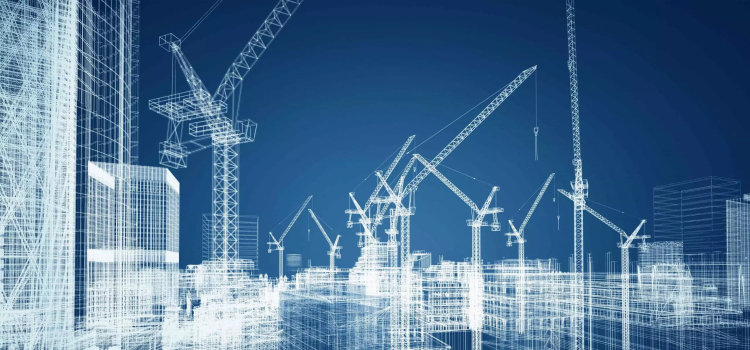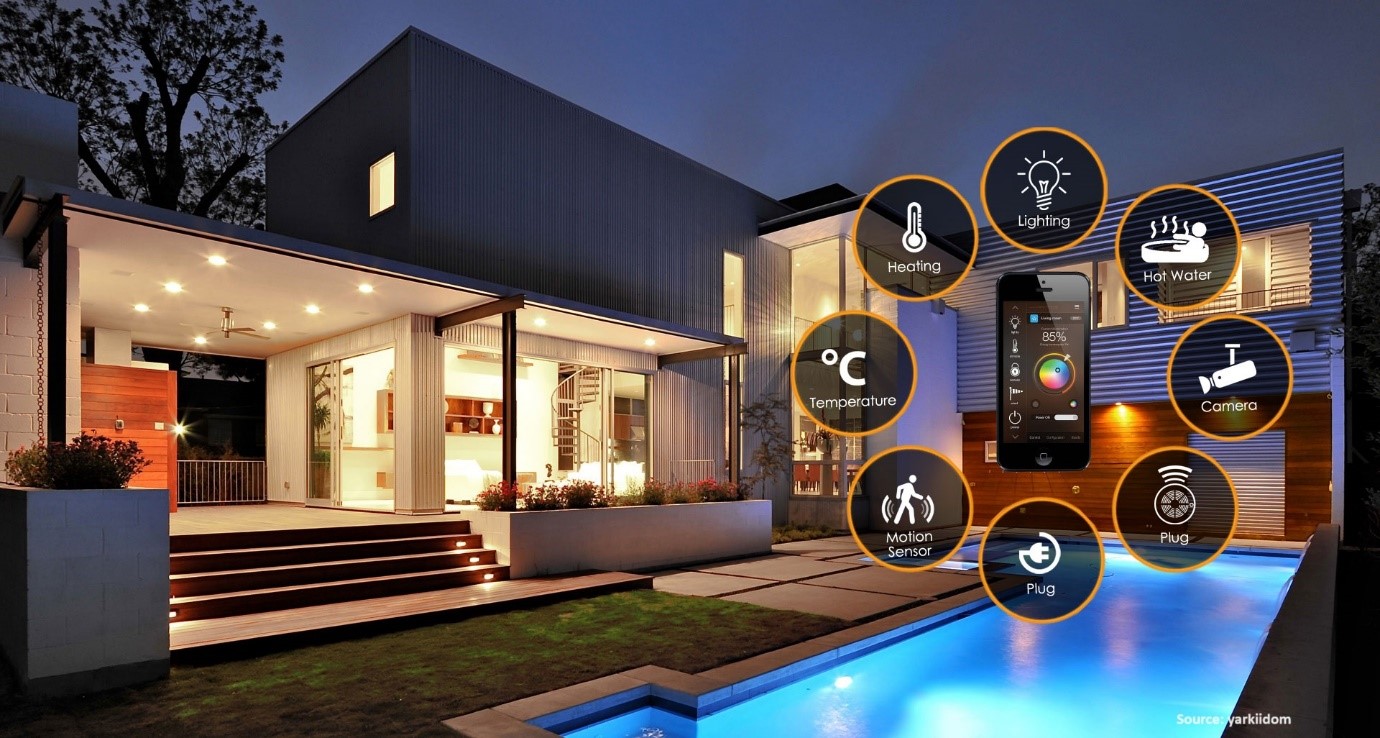How Emerging Technologies are Reshaping the Construction Market
22-Dec-2023

Introduction
The construction industry stands on the brink of a technological revolution, propelled by various emerging technologies and advancements. From digital transformation to sustainable practices, these innovations reshape how buildings and infrastructure are designed, constructed, and maintained. According to the latest report published by Next Move Strategy Consulting, the global construction industry is expected to reach USD 16.10 trillion, with a CAGR of 5.9% from 2024 to 2030. In this blog, we will explore some of the most impactful technologies driving change in the construction sector and their potential to revolutionize the industry.
Building Information Modeling (BIM): Building Information Modeling (BIM) has emerged as a game-changer in the construction industry. This comprehensive digital representation of construction projects leads to enhanced collaboration, visualization, and analysis throughout the project lifecycle. BIM facilitates improved decision-making, reduces errors, and enhances project outcomes by providing stakeholders with a centralized platform for data sharing and coordination.
For example, OpenSpace launched OpenSpace BIM+, a new product designed to improve coordination between Virtual Design and Construction (VDC) and field teams. This innovative tool leverages AI and computer vision technology to align 360° photos with BIM, simplifying field-to-office BIM coordination. The introduction of OpenSpace BIM+ aims to improve collaboration and enhance efficiency in construction projects by integrating visual data with BIM for seamless communication between on-site and off-site teams.
Prefabrication and Modular Construction: Prefabrication and modular construction techniques transform traditional construction practices. By assembling building components off-site in controlled factory environments, prefabrication streamlines project timelines, reduces costs, and enhances quality. Modular construction offers flexibility and scalability, allowing for rapid deployment of buildings and infrastructure to meet evolving needs. A report published by the Center for American Progress reveals that modular buildings can accelerate project timelines by 30–50%. Also, they generally require 67% lesser energy than the conventional construction of equivalent products.
Robotics and Automation: Robotics and automation technologies are revolutionizing construction site operations. From autonomous vehicles for site surveying to robotic bricklayers and material handling systems, these technologies improve productivity, efficiency, and safety on construction sites. Robotics and automation enable repetitive tasks to be performed precisely and consistently, freeing human resources for more complex activities, including design & engineering, quality control, and collaboration & communication.
For instance, ABB Robotics and Porsche Consulting partnered to advance automation in the construction industry, aiming to bring widespread adoption of robotics and automation in construction operations. This collaboration focuses on developing new ways of manufacturing modular housing components to increase sustainable and affordable housing while addressing labor shortages and enhancing job opportunities for existing and future employees.
Augmented Reality (AR) and Virtual Reality (VR): Augmented Reality (AR) and Virtual Reality (VR) technologies are revolutionizing design visualization, project planning, and stakeholder engagement in the construction industry. AR and VR enable immersive experiences, which, in turn, allow stakeholders to visualize projects in 3D, conduct virtual walkthroughs, and simulate construction scenarios. These technologies enhance communication, reduce errors, and improve decision-making throughout the project lifecycle.
For example, Trimble AR Connect, a new platform, enables augmented and mixed reality in the construction field. Workers can overlay digital models onto physical construction sites for real-time comparisons and analysis. This technology enhances collaboration, productivity, and accuracy during construction, providing a more efficient and streamlined workflow for all stakeholders involved. Trimble's AR Connect is a significant step forward in integrating advanced technology into the construction industry. This becomes a powerful tool for improving project outcomes and reducing costs.
Internet of Things (IoT): The Internet of Things (IoT) transforms construction site management and operations. IoT devices such as sensors and drones provide real-time data monitoring and analysis, optimizing equipment utilization, safety monitoring, and resource management. IoT enables proactive maintenance, improves project efficiency, and enhances overall project performance.
For example, EarthCam launched the IoT StreamCam 4K, offering retailers and contractors a cost-effective solution for integrating jobsite cameras and IoT sensors. This platform, demonstrated at the SPECS conference, provides superior insight for managing risk during retail construction. It enables multiple wireless devices to share a single data connection and delivers configurable alerts for various events.
3D Printing: 3D printing technology is revolutionizing the construction industry by enabling the fabrication of complex building components and structures on site. From concrete to steel, 3D printing offers unprecedented design freedom and customization, reducing material waste and construction time. 3D printing can revolutionize construction by unlocking new possibilities in design, sustainability, and affordability.
In March 2024, ICON introduced a new Phoenix 3D printer, measuring over 20 meters. It enables quick and easy construction of multistory buildings using a low-carbon mix for fully enclosed structures. The printer uses a robotic arm and crane system, reducing embodied and operational impacts compared to traditional construction methods. This innovation showcases the potential of 3D printing in revolutionizing the construction industry and promoting sustainable urban development.
Sustainable Construction Practices: Sustainable construction practices are gaining momentum in response to growing environmental concerns and regulatory requirements. Green building materials, energy-efficient design, and renewable energy integration are increasingly prevalent in construction projects. Sustainable practices minimize environmental impact, reduce operating costs, and enhance long-term sustainability.
For instance, Construction leaders from across Europe launched an EU Policy Roadmap aimed at achieving climate-neutral buildings and construction by 2050. This initiative is part of a broader effort to minimize emissions of gases contributing to the greenhouse effect in the construction industry, responsible for approximately 36% of Europe's CO2 emissions.
Conclusion:
In conclusion, the global construction industry is experiencing a profound transformation driven by advanced technologies and sustainable practices. The adoption of Building Information Modeling (BIM), prefabrication, robotics, augmented and virtual reality (AR/VR), Internet of Things (IoT), 3D printing, and sustainable construction methods is reshaping the landscape of construction projects worldwide. These innovations enhance collaboration, improve efficiency, reduce costs, and promote sustainability throughout the project lifecycle. As evidenced by the significant investments and partnerships in the sector, construction companies are adopting technological innovations to address the changing requirements of the sector to drive positive change. With continued innovation and adoption of these technologies, the construction sector is positioned for sustained advancement and development in the foreseeable future.
About the Author
 Shyam Gupta is a passionate and highly enthusiastic researcher with over four years of experience. He is dedicated to assisting clients in overcoming challenging business obstacles by providing actionable insights through exhaustive research. Shyam has a keen interest in various industries, including Building Materials, Heavy Machinery, and Commercial Building Construction, and he consistently endeavors to deliver valuable perspectives in these areas. In addition to his research work, Shyam enjoys sharing his thoughts and ideas through articles and blogs. During his leisure time, he finds solace in the world of literature and art, often engrossed in reading and expressing his creativity through painting. The author can be reached at shyam.gupta@nextmsc.com
Shyam Gupta is a passionate and highly enthusiastic researcher with over four years of experience. He is dedicated to assisting clients in overcoming challenging business obstacles by providing actionable insights through exhaustive research. Shyam has a keen interest in various industries, including Building Materials, Heavy Machinery, and Commercial Building Construction, and he consistently endeavors to deliver valuable perspectives in these areas. In addition to his research work, Shyam enjoys sharing his thoughts and ideas through articles and blogs. During his leisure time, he finds solace in the world of literature and art, often engrossed in reading and expressing his creativity through painting. The author can be reached at shyam.gupta@nextmsc.com
Add Comment
Related Blogs
Top 10 Companies Operating in the Global Smart Home Industry
Next Move Strategy Consulting Forecasts strong growth in the global smart home m...
Role of Leading Companies in Shaping the Latest Trends in Elevator Market
Introduction In the ever-evolving landscapes of modern ci...
Beyond Brick and Mortar: Future Trends in Real Estate
Introduction: In today's changing world, real estate is undergoing signif...










